Uncover Arcachon vibrant flavors and culinary gems with our expert guides. Plan an unforgettable trip now!
Read more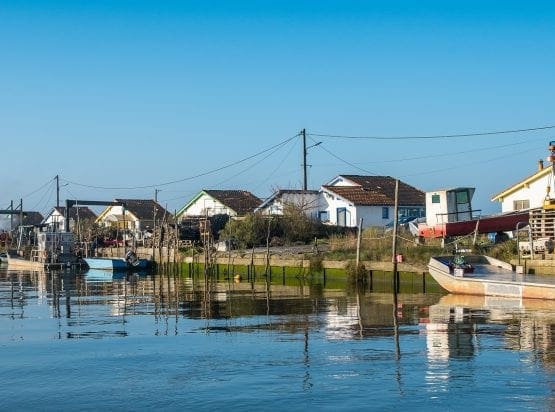
EXPLORE ALL OUR BORDEAUX WINE REGIONS GUIDE
Last updated: April 4, 2025
Sauternes has been in a quandary of late. This iconic Bordeaux district of five villages (including Barsac) produces France’s greatest sweet wine: luscious, aromatic, complex, and very long-lived. Yet it remains underappreciated – and undervalued – as consumers eschew dessert wine styles for the refreshing kick of bone-dry Sauvignon Blanc.
Fortunately, the Sauternais are a pragmatic bunch: almost every major property from Château Doisy Daene to Château d’Yquem now markets a Bordeaux Blanc Sec. The region has also witnessed a resurgence in upmarket tourism, with newly built luxury hotels and Michelin restaurants catering to an international jet set with money to burn.
Meanwhile, even the finest labels continue to be of good value, and Sauternes is racking up exceptional vintage after exceptional vintage. Someone has to drink and appreciate these rich-textured, flower-scented, glittering bottles of liquid gold.
Discover More About French Wine
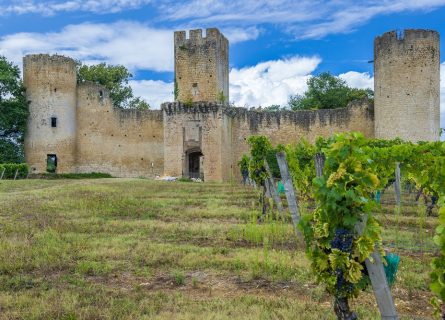
Sweet wines have been produced in Bordeaux for a very long time. Unlike modern-day consumers, the Romans had no love of bone-dry tannin and crisp, dry whites. Cultivating vines to the south of Bordeaux city, their preference was to concentrate the must by boiling it before fermentation. This concoction would then be stored in clay amphorae and heated over a furnace, oxidizing and stabilizing the wine – if we can call it wine at all!
Moreover, the Romans were not reticent about further adulteration, adding pepper, spices, and honey to their beverages. According to historians, this process was an insurance policy against wines too foul to drink; merchants used to carry their own additives to make tavern wine more palatable on the long journeys to seek out new markets and business opportunities!
Bordeaux’s Wine Renaissance
However, after the Western Roman Empire collapsed in AD 476, viticulture was forgotten as Gaul became embroiled in numerous conflicts between rival civilizations in the post-Roman period. As a result, Bordeaux’s winegrowing industry did not recover until the second millennium, revitalized by the fortuitous marriage between Henry of Anjou and Eleanor of Aquitaine in 1155.
This political union between England (a major wine consumer) and the fertile lands of Aquitaine coincided with a significant increase in vine plantings; Henry II granted trading privileges to the leading vineyards of the time, giving them a major head start in key export markets.
Golden Age of Sweet Wines
By the 17th century, botrytized sweet wines were being made in the vineyards of Sauternes to the west of the Garonne River; historical documents refer to a 1666 court case involving the owner Château d’Yquem and several growers who wished to pick their grapes before the fungus had taken hold in the bunches.
As incredible as it sounds today, the unctuous sweet wines of Bordeaux were considered superior (in quality and price) to the red wines of the Medoc in the 18th and 19th centuries. Indeed, Thomas Jefferson, George Washington, and the Russian Tsars were all avid fans of Château d’Yquem, paying fabulous sums for a case of this golden nectar. At the same time, the English nobility did the same.
Changing Fortunes in the 20th Century
Yet attitudes to sweet wines have vacillated wildly over the past 130 years. Having been the height of fashion in the 19th and early decades of the 20th century, the status of these wines declined rapidly in the years after World War II.
By the mid-1900s, the demand for Sauternes had diminished to the point where certain properties replaced their Semillon and Sauvignon Blanc with Cabernet Sauvignon! Thankfully, red grapes have once again been (rightly) banished from the vineyards of Sauternes, although the production of dry styles continues apace. In the current social and economic climate, that is no bad thing.
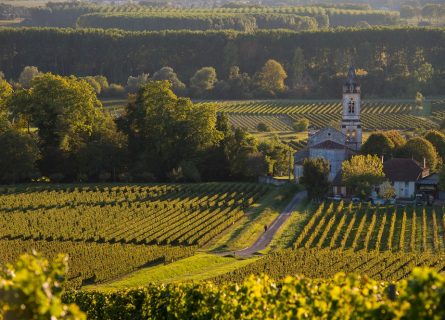
The Sauternes vineyards are located south of Bordeaux city, about 65 kilometers from the downtown area. The wider zone covers approximately 1557 hectares and is spread over five communes: Barsac, Sauternes, Bommes, Fargues, and Preignac.
Each of these villages has the legal right to label their wines as Sauternes; there is a distinct appellation for the commune of Barsac (Barsac AOC) that local estates increasingly use. The vines are planted on an alluvial plain, with calcareous soils yielding the most structured and powerful wines, contrasting with the lighter styles made from sandy terroir.
The Challenge and Risk of Making Sauternes
Yet making (sweet) Sauternes is risky, fraught with uncertainties, and the capricious reality of botrytis sweet wine production. Much depends on the local weather conditions and on a very unusual fungus called botrytis cinerea or “noble rot.” In this corner of Bordeaux, mists often form along the River Ciron during the fall, lasting till after dawn. This moisture-rich fog descends on the vines during mild, misty nights, encouraging the development of fungal spores that begin to devour the grape skins as the sun rises.
Over time, botrytis changes the skin to a brown pulp, reducing the water content and concentrating the remaining sugars and acids in the juice. Unfortunately, this seldom occurs at an even rate – if at all. To make the finest Sauternes, growers are forced to pick the grapes as they succumb to the mold, sometimes berry by berry; only the most prestigious estates can afford to do this. The rest of Sauternes harvest the entire crop at once and hope that the noble rot has spread throughout the vineyards.
The Perils of Weather and Rot
Of course, not all types of rot are desirable. Humid weather in October, which is by no means uncommon, can turn the mold into the destructive fungus known as grey rot – this nasty malady can devastate entire crops in bad vintages. Alternatively, there have been years – such as 2012 – when botrytis has been absent from the vineyards altogether. The vintage was so disastrous that Château Rieussec and Château d’Yquem refused to make any wine in 2012.
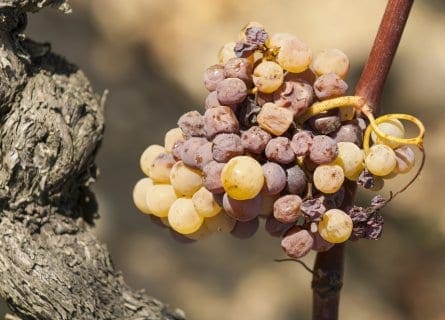
Sauternes is potentially one of the world’s longest-lived and most profound sweet whites. It is made using a time-honored and detailed process that, to put it simply, involves a slow fermentation of rich grape juice and then maturation in small barrels. But, as every quality-conscious winemaker knows, that pithy summation barely scratches the surface!
The Rigorous Harvesting Process
Of course, the hard work begins on the ground. The traditional and time-consuming approach involves multiple passes through the vineyard, known as tris, to ensure that only the grapes fully affected by botrytis are picked. Those affected by grey or black rot are cut off and discarded.
Meanwhile, those still unaffected – or only partially affected – are left on the vine. In certain years, a team of pickers may make up to ten passes through the vineyard over a period of 30-40 days to harvest a sufficient quantity of grapes. But, under the relentless pressure to control costs, some estates now harvest their berries in one sitting and hope for the best.
Fermentation and Maturation
These raw materials are transferred to the winery and pressed in traditional vertical basket presses or pneumatic machines. Several properties, including d’Yquem, elect to transfer this unctuous must directly into barrique and undertake a slow fermentation in wood. The high sugar level in the juice ensures that the yeast will work slowly, typically leaving about 115-120 grams per liter of residual sugar in the wine.
Usually, the fermentation process stops naturally as the yeast becomes ‘exhausted’ by the high glucose content. However, sulfur dioxide is invariably added to halt the vinification with the desired amount of sugar remaining.
It is then aged in French oak for at least 16-18 months; the percentage of new wood used and the duration will vary significantly between different châteaux. However, as a general rule, the blending (assemblage) will occur in the spring of the following year and continue through the summer.
The Grape Composition
The vast majority of Sauternes contains at least 60-70% Semillion, with Sauvignon Blanc and occasionally Muscadelle providing freshness and perfume. Dry white production in the appellation mirrors Pessac-Leognon and Graves: grapes are vinified in stainless steel or wood barrels, with every last gram of sugar converted into alcohol. Cool fermentations in steel help accentuate fruit and aromatics, and oak aging adds structure and complexity.
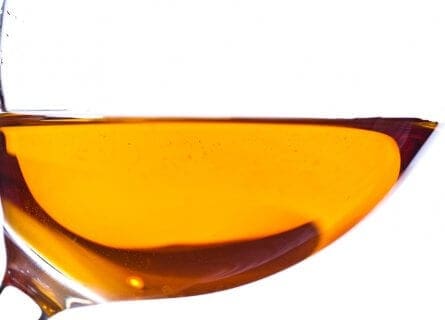
In February 2014, Swiss entrepreneur Silvio Denz purchased the Sauternes estate Château Lafaurie-Peyraguey. An astute businessman, Denz recognized that tradition and sentiment were, in raw commercial terms, a poor substitute for a healthy balance sheet.
Thus, the region’s newest arrival invested heavily in putting Sauternes on the international tourist map – Lafaurie Peyraguey’s luxury hotel is one of Bordeaux’s leading destinations – and increasing the production of dry white wines.
As Silvio Denz noted in 2014:
“Sauternes has been in a crisis for the last 30 years, and there is no easy way out – sweet white wine is unfortunately out of fashion today, and dry white wine will be the beneficiary in terms of sales and cash flow for the time being.”
His announcement ruffled some feathers in the historic appellation of Sauternes, including Olivier Casteja of Doisy-Vedrines. ‘Sauternes is an area for sweet wine,‘ Casteja simply opined.
Ownership Shifts and New Directions
Of course, a great deal has changed over the past decade. In 2022, Berenice Lurton sold her majority stake in Château Climens to Jean-Hubert Moitry with funds from the family’s Patrimonia Développement group. Château Guiraud has also seen a change of ownership, with the founding chairman of EPSA, Matthieu Gufflet, acquiring a significant financial interest in 2021. The underlying reason for these takeover bids is always the same: Sauternes is incredibly expensive to produce (not least due to the paltry yields) and highly unfashionable in Millennial circles. Yet Bordeaux Blanc has stolen a march in restaurants and retailers, so Guiraud launched a new brand, Grand Vin Blanc Sec, in 2021.
The truth is that we can no longer regard Sauternes as a “sweet wine region.” To survive, this ancient vineyard has to move with the times; this necessitates maintaining a duality of production, with dry styles playing a role of equal (or greater) importance alongside Sauternes’ dessert wines.
As Château Suduiraut’s MD Christian Seely noted in 2022:
“I believe profoundly that the quality of the dry white wines that we are now able to produce at Château Suduiraut represents a remarkable opportunity for the future of the Château. With the launch of our Vielles Vignes Grand Vin Blanc Sec 2020, we are stating clearly our belief and ambition that in the future, Château Suduiraut will be known for its two Grands Vins, one Liquoreux and one Sec, both of them unique expressions of our First Growth terroir.”
Meanwhile, the appellation’s growing volume of dry whites offers exceptional value. Indeed, they are packed full of fruit and freshness, sold at prices that seriously undercut their equivalents from Pessac-Leognan. Fifty years ago, it would have sounded ludicrous, but today, no one would bat an eyelid: if you seek an aromatic and bone-dry white, delve into the traditional heartland of botrytized sweet wines.
Explore the allure of the Semillon grape & its legendary connection to Sauternes. Unveil the history & flavors of this captivating varietal. Cheers!
Find out moreThe sauvignon blanc grape varietal, originally from the Bordeaux region of France, is now one of the world's most loved white varieties.
Find out moreMuscadelle is a white grape varietal, primarily used for blending in the production of sweet white wines in the Bordeaux region.
Find out more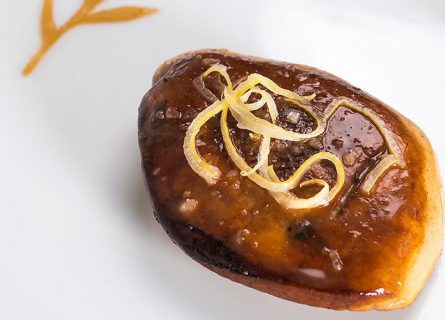
The food scene in Sauternes used to be dire – tourists and locals would drive to Bordeaux (or Arcachon) for their weekend fix of Entrecote Bordelaise and Fruits de Mers. However, investors like Château Guiraud and Silvio Denz (owner of Lalique Crystal) have revitalized the area’s restaurant scene over the past seven years.
Today, La Chapelle de Guiraud serves up mouthwatering bistro dishes. At the same time, Restaurant Lalique (2 Michelin stars) specializes in refined, elegant interpretations of Bordeaux cuisine, Scallop soufflé, pistachio, and black truffle to start, followed by Mallard duck marinated in Sauternes, morello cherry, and chestnut. Sounds divine to us.
A Gastronomy Guide to the Cuisine of Bordeaux: Read more

Uncover Arcachon vibrant flavors and culinary gems with our expert guides. Plan an unforgettable trip now!
Read more
Uncover Bordeaux's vibrant flavors and culinary gems with our expert guides. Plan an unforgettable trip now!
Read more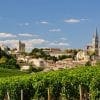
Uncover Saint Emilion's vibrant flavors and culinary gems with our expert guides. Plan an unforgettable trip now!
Read moreIf you would like us to customize an exclusive luxury tour, contact us and let us know your travel plans. We offer luxury food and wine tours for private groups of a minimum two guests. In addition, all of our private, chauffeured tours are available year-round upon request.

